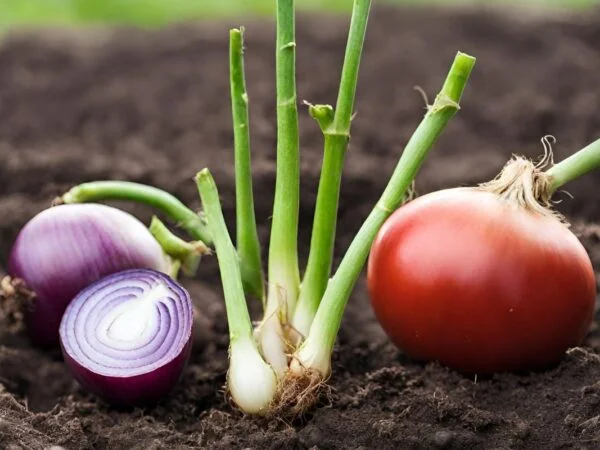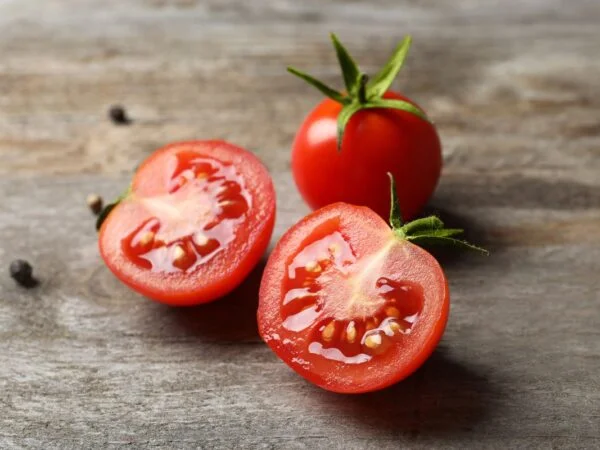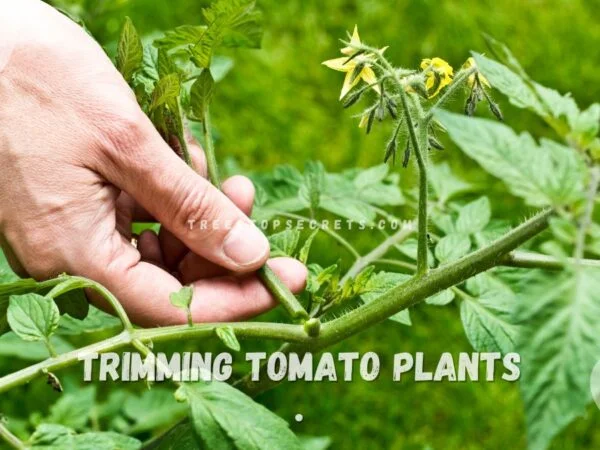Protecting your tomato plants is crucial, especially when facing unpredictable weather patterns. As the gardening season's forecast can bring unexpected challenges, it's essential to shield your plants from adverse conditions. Covering methods play a pivotal role in safeguarding tomato plants, providing them with the necessary protection to thrive despite varying weather elements. Utilizing row covers is one effective approach in shielding your precious crops from harsh winds, heavy rains, or unanticipated temperature fluctuations during the season.
Understanding Frost and Tomato Plants
Early Frost Risks
Early frosts pose a significant threat to tomato plants. When temperatures drop below freezing in the season, the tender tomato plants can suffer damage. The impact of early frosts on tomato plants includes wilting, browning of leaves, and ultimately death if left unprotected. It's crucial for gardeners to understand the dangers of early frosts and take proactive measures to protect their tomato plants.
Proactive protection involves covering the tomato plants with suitable materials such as frost blankets or row covers. These protective layers act as insulators, trapping heat from the soil to shield the delicate plants from freezing temperatures. By being proactive in protecting their tomato plants from early frosts, gardeners can ensure that their crops survive and continue to thrive.
-
Pros:
-
Protects tender tomato plants from damage
-
Ensures continued growth and harvest
-
Cons:
-
Requires timely action before frost hits
Temperature Tolerance
Tomato plants have specific temperature thresholds that affect their growth and overall health. Extreme cold temperatures can cause detrimental effects on tomato plant development, leading to stunted growth or even plant death. On the other hand, excessively high temperatures can also negatively impact fruit set and quality.
The optimal temperature range for growing healthy tomatoes is between 70°F (21°C) and 85°F (29°C). Within this range, tomatoes thrive best without experiencing stress or adverse effects due to extreme weather conditions.
-
Key Information:
-
Optimal temperature range: 70°F (21°C) to 85°F (29°C)
Plant Science
Understanding the physiology of tomato plants is essential for maintaining their health and promoting fruitful harvests. Various factors can affect a plant's health; these include nutrient availability in the soil, water supply, sunlight exposure, air circulation around the plant foliage, and ambient temperature.
Providing suitable conditions involves ensuring adequate nutrients in the soil through fertilization at appropriate times during planting stages. Consistent watering practices help maintain moisture levels necessary for robust plant growth while preventing issues like blossom end rot caused by calcium deficiency due to irregular watering schedules.
Preparing for an Early Frost
When covering tomato plants to protect them from frost, it's crucial to utilize the natural sunlight for warmth. As the sun sets, temperatures drop, posing a threat to the plants. By covering them just before sunset, you can trap some of the day's heat and shield them from the sudden cold.
To ensure that your tomato plants are adequately protected during cooler evenings, consider using materials like blankets or row covers. These can act as insulators by trapping warm air close to the plants. It's important to secure these coverings properly so they don't blow away in strong winds and leave your plants exposed.
An example of utilizing timely sunset protection is when you observe that evening temperatures are forecasted to dip significantly below what is safe for your tomato plants. At this point, taking action just before dusk by covering them will help retain enough warmth throughout the night.
Ideal Covering Temperature
Determining the best time to cover tomato plants involves balancing their temperature needs with their growth stage. If there is an early frost warning and your tomatoes are still producing fruit or ripening, it's essential to provide adequate warmth without hindering their development.
Covering tomato plants becomes necessary when nighttime temperatures drop below 50°F (10°C), especially if they are not yet acclimated to such cool conditions. This ensures that they continue thriving despite adverse weather conditions.
One way of ensuring adequate warmth during cooler periods is by using temperature-sensitive devices or apps that alert you when specific thresholds are reached. This proactive approach allows you to cover your tomato plants at precisely the right time based on real-time temperature readings.
Necessary Protection Equipment
Fabric Row Covers
Fabric row covers are essential for protecting tomato plants from frost. They create a barrier that shields the plants from freezing temperatures, wind, and pests.
Choosing the right fabric material is crucial. Look for lightweight fabrics like polypropylene or floating row covers made of spunbonded polyester. These materials allow sunlight, air, and moisture to reach the plants while providing insulation against cold weather.
Proper installation techniques involve draping the fabric over support structures to ensure it does not come into direct contact with the foliage. This prevents damage to the plants while still providing effective protection.
When using fabric row covers for tomatoes, they offer several benefits. They safeguard against frost damage by trapping heat close to the plant and creating a microclimate that's warmer than outside temperatures.
Another advantage is their ability to protect against pests like aphids and whiteflies without requiring chemical intervention.
Support Structures
The importance of sturdy support structures cannot be overstated when covering tomato plants with fabric or any other protective material. Sturdy supports prevent the cover from collapsing onto delicate foliage during heavy winds or under accumulating snow.
There are various types of support systems available, including metal hoops, wooden stakes, PVC pipes, and wire cages. Each type offers different benefits in terms of stability and ease of use.
Ensuring stability in various weather conditions involves securing the supports firmly into the ground so they can withstand strong winds without toppling over.
Covering Techniques for Tomato Plants
It's essential to follow a systematic approach. First, choose the right cover material. Consider using frost cloth or row covers specifically designed for plant protection. These materials allow air, light, and moisture to reach the plants while providing adequate insulation.
Next, carefully drape the cover over the tomato plants, ensuring that every part of the plant is adequately protected. Be gentle during this process to avoid damaging the plants or their delicate stems and leaves.
Then, secure the cover around the base of each plant using stakes or rocks. This will prevent it from being blown away by strong winds and ensure that it remains in place during inclement weather.
Lastly, regularly inspect your covered tomato plants to ensure that they are thriving underneath. Look out for any signs of distress such as wilting or discoloration and make adjustments as necessary.
To securely fasten covers over your tomato plants, use garden staples or fabric clips to anchor them into place without causing damage. These tools provide a secure hold while allowing for easy removal when needed.
Another method involves burying the edges of the covers in soil around each plant. This prevents wind displacement by creating a tight seal against gusts of wind.
Furthermore, consider utilizing heavy objects like bricks or stones along with bungee cords to weigh down and keep covers intact even during severe weather conditions.
Special Considerations for Peppers and Eggplants
Pepper Plant Care
Pepper plants require specific care. Unlike tomatoes, peppers have contrasting needs that must be taken into account. For instance, while both plants benefit from protection against extreme weather conditions, peppers are more sensitive to low temperatures. This means that the cover used for pepper plants should provide not only shade but also warmth in cooler climates.
When protecting pepper plants, consider using materials like row covers or individual plant protectors to shield them from cold winds and frost. These covers can be made of lightweight fabric or plastic and help trap heat around the plant while still allowing sunlight and water to reach it. Ensure that the cover is secured properly so it doesn't damage the delicate stems and leaves of the pepper plant.
Eggplant Protection
Similar to peppers, eggplants have their own set of specialized care requirements. It's essential to tailor these methods specifically for eggplants' unique needs rather than applying generic solutions used for other vegetables such as tomatoes.
To maintain optimal conditions for eggplants, consider using protective measures such as mulch, which helps regulate soil temperature and moisture levels around the plants. Utilizing cloches or row covers can offer additional protection by creating a microclimate that shields eggplants from harsh weather conditions like strong winds or heavy rains.
Best Practices for Cold Weather Care
When covering tomato plants, it's crucial to water them properly. Overwatering can lead to fungal diseases, while underwatering can cause the plants to wilt. To avoid these issues, water the plants at their base rather than from above.
Maintaining soil moisture levels is essential for the health of covered tomato plants. The covers can trap moisture, so it's important to monitor the soil and ensure it doesn't become too soggy. This can be achieved by using a moisture meter or simply checking the soil with your fingers.
To prevent water-related damage to covers, consider using supports such as stakes or cages around each plant. These supports will help keep the cover off the foliage and fruits, preventing excess moisture from accumulating on them.
Feeding Requirements
Covered tomato plants have specific nutritional needs that must be met for optimal growth and fruit production. It's essential to provide a balanced fertilization strategy that includes both macro and micronutrients.
A balanced fertilizer high in potassium is beneficial for covered tomato plants as it promotes fruit development and overall plant health. Incorporating organic matter into the soil before covering the plants can provide a steady source of nutrients throughout the growing season.
Promoting healthy growth under covers involves regular feeding with a well-balanced liquid fertilizer formulated specifically for tomatoes. This ensures that all necessary nutrients are readily available to support vigorous growth even when protected by covers.
Supporting Tomato Plants Effectively
Structural Support
Providing adequate structural support is crucial for their growth and protection. Reinforcing cover structures against adverse weather, such as heavy rain or hail, is essential to prevent damage to the plants. Sturdy stakes or cages can help maintain stability during strong winds, ensuring that the plants remain upright and undamaged. Evaluating and enhancing support systems regularly will help identify any weaknesses and address them promptly.
Proper anchoring of the support structures is vital to ensure they can withstand harsh weather conditions. Adding extra ties or braces for additional reinforcement can further safeguard the tomato plants from being toppled over by strong winds or heavy downpours. For example, using metal stakes driven deep into the ground provides a secure base for supporting tomato vines.
Managing Pests and Diseases
Pest Control
Covering tomato plants can act as a physical barrier, preventing insects like aphids and caterpillars from reaching the plants. This method is especially effective when combined with other pest control strategies such as using sticky traps or applying natural repellents like neem oil. By utilizing these techniques, you can effectively limit pest intrusion without harming the plants themselves.
Employing eco-friendly pest control methods is crucial for maintaining a healthy growing environment for your tomato plants. For instance, introducing beneficial insects such as ladybugs or lacewings can help keep destructive pests in check without resorting to chemical pesticides that may harm the surrounding ecosystem. Moreover, practicing crop rotation and intercropping with companion plants like marigolds can naturally deter certain pests while promoting biodiversity in your garden.
-
Physical barriers prevent insect intrusion
-
Using natural repellents like neem oil
-
Introducing beneficial insects for pest control
Disease Management
In order to mitigate disease risks under covers, it's essential to promote plant immunity through cover practices. For example, choosing covers made of materials that allow proper air circulation helps reduce moisture buildup around the plants, thus minimizing the risk of fungal diseases such as blight. Furthermore, incorporating good sanitation practices by regularly removing any diseased leaves or debris from around the covered area can significantly reduce the spread of diseases among tomato plants.
Early detection and prevention strategies are also key components of disease management when covering tomato plants. Regularly inspecting the foliage for any signs of disease and promptly addressing any issues can prevent small problems from escalating into larger outbreaks that could potentially devastate your entire crop. By being vigilant about monitoring your covered tomato plants and taking proactive measures at the first sign of trouble, you can effectively safeguard them against common diseases.
Ensuring Plant Survival Through Frost
Regular monitoring of temperature under covers is crucial to ensure the survival of tomato plants during frost. By using a simple thermometer, you can keep track of the temperature underneath the covers, ensuring it stays within a suitable range for your plants.
Calibrating cover ventilation based on temperature is essential. If the temperature rises too high under the covers, you may need to open them slightly to prevent overheating. On colder nights, closing up the covers more tightly can provide extra warmth and protection for your plants.
Taking corrective measures when needed involves being proactive in response to unfavorable temperatures. For example, if a sudden drop in temperature is expected overnight, adding an extra layer of covering or providing additional insulation can help safeguard your tomato plants from potential damage caused by frost.
Conclusion
You've now got the inside scoop on protecting your tomato plants from frost. By understanding the potential risks, preparing adequately, and utilizing the right techniques, you can ensure your plants stay safe and healthy even in chilly weather. Remember to provide the necessary support and keep an eye out for pests and diseases to guarantee your plants thrive.
Now go out there and give your tomato plants the care they deserve! Don't let frost catch you off guard – with these tips, you're ready to be the guardian of your garden. Happy gardening!
Frequently Asked Questions
How does frost affect tomato plants?
Frost can damage the tender parts of tomato plants, leading to wilting and even death. It's crucial to protect them during cold spells.
What equipment do I need to cover my tomato plants?
You'll need materials like row covers, plastic sheeting, or blankets for insulation. Stakes or hoops can help support the covering without crushing the plants.
Can I use old bedsheets to cover my tomato plants?
Yes, old bedsheets can be repurposed as covers for your tomato plants. Just ensure they are secured properly and provide adequate protection from frost.
Should I also cover pepper and eggplant plants in cold weather?
Yes, it's advisable to extend protection to pepper and eggplant plants as well since they are susceptible to damage from frost.
How do I effectively support my tomato plants during colder months?
Using stakes or cages helps keep the plant upright under the weight of covers and provides stability against harsh winds. Regularly check for any signs of stress on the stems.
Image Source: Paid image from CANVA




